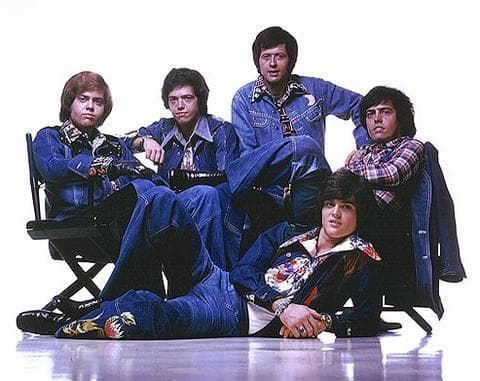
A Spiritual Odyssey in Pop: The Enduring Power of “Peace”
The year 1973 was a curious time in pop music. Glam rock glittered, singer-songwriters introspected, and the teeny-bopper idol machine, having been revved up to a high pitch by the likes of the Jackson 5 and, of course, The Osmonds, was still spinning furiously. Yet, amidst the screams and the sensational sales of singles like “Crazy Horses” and Donny Osmond’s solo hits, something profound and deeply personal emerged from the family group: their audacious concept album, The Plan. And tucked within this ambitious work, far from the bubblegum image that followed them everywhere, was the track that spoke volumes about their own internal world and their fundamental beliefs: the soaring ballad, “Peace.”
This track, an earnest and emotionally resonant spiritual yearning, was never released as a commercial single, meaning it has no official chart position as a standalone release. However, its importance is inextricable from the album it belongs to, The Plan, which itself charted on the Billboard Top LPs at number 58 in 1973—a respectable but undoubtedly challenging placement for a record so spiritually heavy and musically progressive for a band of their stature. The very existence of this song and its parent album is the core of its story, representing a courageous and pivotal moment when The Osmonds sought to shake off the ‘teen idol’ shackles and be taken seriously as rock musicians with a serious message.
The Plan was the band’s magnum opus, a rock opera conceived by the older brothers—Alan, Wayne, and Merrill—as a musical articulation of the Mormon faith’s “Plan of Salvation.” It was a bold, almost revolutionary move for a major pop group, especially one so associated with youthful, easily digestible hits. “Peace” serves as one of the album’s most direct and moving expressions of the album’s theological narrative, speaking to the ultimate state of tranquility that the faithful hope to achieve. The meaning is not about a simple end to global conflict, though that’s certainly part of its universal appeal; it is a deeper, more abiding request for spiritual peace—the quiet certainty of being right with one’s God, of having navigated life’s tempestuous seas and found safe harbor. It is the peace “which passeth all understanding,” as the famous scriptural phrase goes.
For those of us who came of age with their music, the song is an almost startling pivot. We remember the frantic energy of “One Bad Apple” and the head-banging thunder of “Crazy Horses.” Then comes the gentle opening of “Peace,” a moment of profound calm in the album’s often dramatic structure. This musical shift—from electric guitar crunch to the lush, orchestral arrangement and Merrill Osmond’s earnest, pleading vocal—is what makes the track so enduring. It feels like a moment of sincere reflection, a quiet conversation that The Osmonds were having with themselves, and in turn, inviting us into that intimate, faithful space.
Listening to it again now, decades later, you can hear the strain and the genuine emotion in the delivery. It’s a sonic document of the pressure the brothers must have been under, juggling superstardom with deeply held religious conviction. The track’s very composition—a mix of progressive rock ambition and heartfelt balladry—underscores the tension between their commercial image and their private identities. It asks a big question, the kind that only comes with maturity and reflection: Where does one find true peace in a chaotic world? It’s a query that resonates not just with the older fan who may have followed their career from the Andy Williams Show to the arenas of ‘Osmondmania,’ but with anyone who has lived long enough to seek more than just fleeting happiness. “Peace” is a quiet beacon from a surprisingly sophisticated concept album, a reminder that even the biggest teen idols of the 70s were grappling with the eternal questions, using their music as a vessel for something far more significant than their next number-one hit.